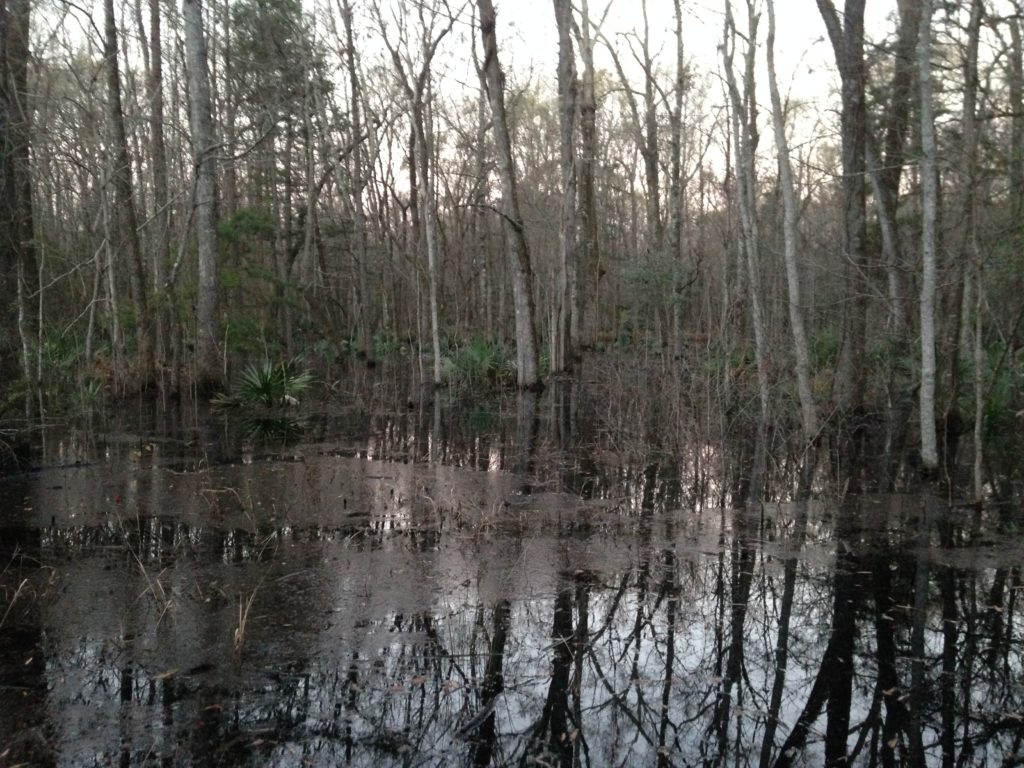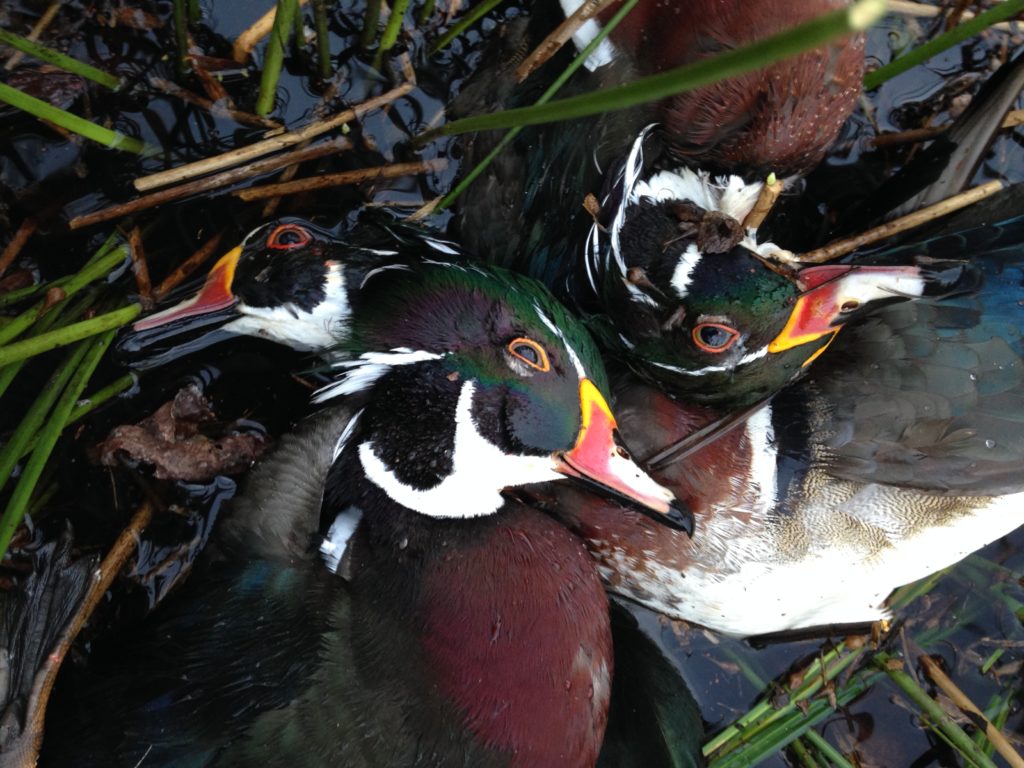
From swamps to beaver ponds, almost every sportsman in the Carolinas can find a few wood ducks to hunt.
As I stood in the dark swamp, knee deep in water, I could hear the whistling of duck wings as they flew by and landed in flooded timber around me. Looking up, I could see ducks in groups of three to as many as 10 silhouetted against the breaking light of the morning sky.
A few minutes later, as darkness began giving way to daylight, I could see them dropping into an opening in the swamp. Legal shooting time finally arrived, and my host called out “Shoot ’em, boys.”
That started what was the most-intense wing shooting experience I’ve ever had. Scores of wood ducks were flying through an opening in the timber, and some were dropping in, wings set to land in a half-acre opening. The sounds of wood duck squeals filled the air, mixed with the roar of shotgun fire. It seemed like shotgun blasts rang through the swamp for an hour, but it was less than 15 minutes before all four of us had our limit of woodies. That was my first duck hunt, and I’ve never been the same since!
Wood ducks can be found anywhere in the Carolinas where there is secluded water: in wooded areas such as rivers, creeks, ponds, swamps and beaver ponds. They can be taken by hunters walking creeks and jump-shooting, floating rivers or just waiting for them to fly into morning feeding areas. You don’t have to have a boat, calls, decoys or a retriever — although you can use all four. Only a shotgun, some appropriate steel shot shells and a pair of waders are required. Wood ducks are also very good eating, which only adds to their popularity. With a limited amount of gear required and wide distribution over both states, they are truly are the waterfowl for everybody.

Bobby Mead of Moncks Corner, S.C., has access to some of the best duck hunting in either Carolina, but he still finds shooting woodies in flooded timber one of his favorite duck hunts.
“I always try to have three or four wood duck holes lined up all the time,” he said, referring to openings in flooded timber or swamps that are like little, shallow ponds; ducks love to land in them.
Woodies love acorns, and flooded timber is usually full of acorns. Mead doesn’t call or decoy woodies but relies on scouting to know where the ducks are feeding during the day. He then slips in before daylight, waits for legal shooting time — 30 minutes before sunrise — and takes them as they drop in to feed. The action can be fast and furious, although it doesn’t last long, usually only 10 to 30 minutes. But if you hit it right, it can be epic.
When you shoot a wood duck, Mead, who has hunted ducks for more than 50 years, advises that you keep your eye on it when it hits the water, and if it shows any signs of life, shoot it again. A wounded wood duck can swim, dive and hide in brush and weeds to escape, and they are notorious for doing so. He also said that you need to “Shoot ’em when you got ’em.” If you find ducks, hunt them as soon as possible, because you never know when they will move on — a lesson he said he learned the hard way.
Almost 300 miles northwest of Mead, Luke Mathis of North Wilkesboro, N.C., hunts corn fields he plants in the spring and floods in the fall for great hunting in an area not usually thought of as a hot spot for waterfowl. He floods the corn fields somewhere between Sept. 20 and Oct. 1 so the ducks can find them by opening day of North Carolina’s short, early October season.

Mathis and his partner, Mike Jolly, have blinds placed strategically around the fields according to flight patterns they have identified over the years. His fields are placed in secluded areas because wood ducks like solitude, which is why Mathis keeps three or four fields to hunt in order to avoid putting too much pressure on the ducks; they’ll leave the area in no time.
Foggy, drizzly, overcast days are his favorite days to hunt, and he is always settled in his blind well before daylight so he’s ready when legal shooting hours arrive. Warm, clear days are his least favorite to hunt; basically, the nastier the weather, the better the hunting.
Mead and Mathis both have great setups to hunt, but wood ducks can be pursued without crop fields or flooded timber by scouting and finding several different spots to hunt. Some hunters take their share of woodies and other ducks by jump-shooting secluded ponds, positioning hunters on around the dam and sending one to the upper end. When everyone is in place, the lone hunter jumps the ducks who are feeding and resting, usually getting a shot or two. The other hunters along the dam are in position and get shots at the ducks as they pass over.
Some hunters float rivers and jump-shoot ducks, but wood ducks can also be found on smaller creeks, especially if beaver dams are present. Hunters don’t need a boat, just a good eye and quick trigger finder, because it’s rarely more than a one- or two-shot deal. Hunters can also sneak in to larger beaver ponds before first light wait for ducks to fly in from the roost to feed, similar to hunting flooded timber.
No matter where you live in North Carolina or South Carolina — and no matter your financial situation — , hunting for Wood ducks can be had, and if you don’t mind working at it a little, some great days afield and some good meals afterward can be your reward. A word of caution, Wood duck hunting is addictive.




Be the first to comment